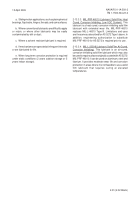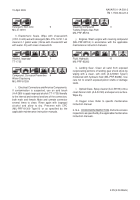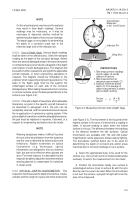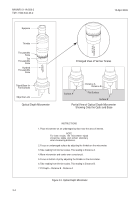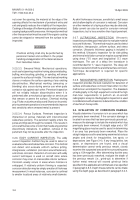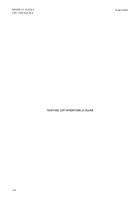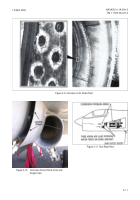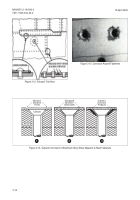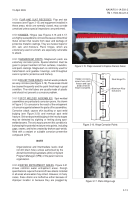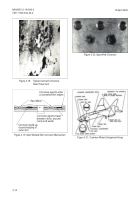TM-1-1500-344-23-2 - Page 65 of 240
3-5
NAVAIR 01-1A-509-2
TM 1-1500-344-23-2
15 April 2009
c. Look through the eyepiece of the micrometer and
rotate the micrometer thimble clockwise or
counterclockwise until surface A comes into sharp
focus. Extreme care should be taken when focusing on
the surface to be measured in order to reduce inaccuracy
in the measured values.
d. Obtain the reading for surface A located on the
vernier scale. Since a vernier scale is not one that can
be easily read, an experienced, trained technician should
read the scale or supervise/check the readings of less
experienced personnel.
e. Position the micrometer over surface B (corrosion
pit or area reworked due to corrosion damage) to be
measured. When measuring the depth of corrosion pits
or reworked areas, ensure that the surface being
measured has a large enough area to be focused in
order to obtain an accurate reading.
f. Repeat procedures c. and d. on surface B.
g. Take the distance readings from surface A and
surface B and subtract the surface A reading from the
surface B reading to obtain the depth of the corrosion
damaged surface. Calculate the pit depth using the
following equation:
Pit Depth = Distance B - Distance A
h. Take several readings from the corrosion
damaged surface and select the deepest reading as the
pit depth.
CAUTION
The apparent simplicity of the penetrant
inspection is deceptive. Very slight variations in
performing the inspection process can invalidate
the inspection by failing to indicate serious
flaws. It is essential that personnel performing
penetrant inspection be trained and experienced
in the penetrant process.
NOTE
The following inspection methods are to be
accomplished only be NDI qualified and certified
personnel (see COMNAVAIRFORINST 4790.2
and AIA/NAS 410). Refer to NAVAIR 01-1A-16,
TM 1-1500-335-23, or specific NDI manual for
more detailed inspection procedures.
3-2.5. FLUORESCENT PENETRANT INSPECTION
(FPI). In fluorescent penetrant inspections, the
component is cleaned and then treated with a fluorescent
penetrating liquid which is capable of entering surface
cracks or flaws. After removing the penetrant from the
surface, a developer (water-soluble, dry powder, or
non-aqueous) is applied to absorb penetrant trapped in
cracks. Under ultraviolet light, the absorbed penetrant
is visible directly above the cracks from which it was
drawn.
3-2.5.1. The penetrant inspection method is used to
detect stress corrosion cracking and special cases of
intergranular corrosion. Intergranular corrosion attacks
the metallic grain boundaries and forms a network of
very fine cracks. In the early stages, the crack indications
are visible only under 10X or greater magnification.
Penetrant indications of intergranular corrosion appear
as a residual background and are resolved only under
magnification. Developer is not used when evaluating a
penetrant indication using a magnifying glass.
3-2.5.2. In addition, penetrant inspection is often used
to monitor the surface for adequacy of corrosion removal
by grinding. Caution must be exercised because
mechanical removal methods cause smearing which
may obscure indications of remaining corrosion attack.
In monitoring corrosion grind-out areas, a developer is
not used: following removal of excess surface penetrant,
the area is examined using a low power magnifying
glass (10X). The examination should be repeated after
a minimum five minute dwell. When corrosion is no
longer detected, the inspection process shall be repeated
using non-aqueous developer.
3-2.5.3. Limitations of Fluorescent Penetrant
Inspection.
3-2.5.3.1. Flaw Location. Penetrant inspection is
applicable to all solid, nonporous materials provided
that the flaw is open to the surface of the part. To detect
subsurface flaws, another inspection method must be
used.
3-2.5.3.2. Restricted Flaw Openings. The penetrant
inspection process depends upon the ability of the
penetrant to enter and exit the flaw opening. Any factor
that interferes with the entry or exit reduces the
effectiveness of the inspection. Organic surface coatings,
such as paint, oil, grease, and resin are examples. Any
coating that covers or bridges the flaw opening will
prevent penetrant entry. Even when the coating does
Back to Top

